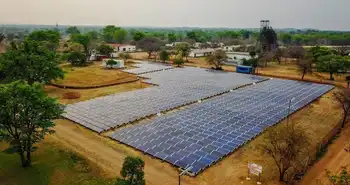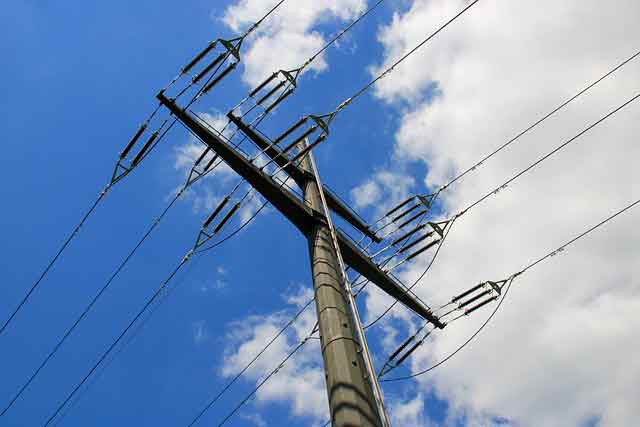$900 million to start Pickering A reactor
Supporters such as Canadian Nuclear Association president Murray Elston praised the move because it will bolster the $1.6 billion already spent on Pickering A.
But opponents of the move said it's simply throwing good money after bad on a project that is years behind schedule and potentially billions over budget.
They pointed out that as recently as this spring, a panel headed by former finance minister John Manley estimated the cost of restarting a second unit at Pickering A to be $600 million, or $300 million less than the new estimate.
But Duncan and Jake Epp, chairman of Ontario Power Generation, said this time the company will finally get it right.
"I am convinced that OPG has learned from its past mistakes," Epp told a news conference recently.
Epp acknowledged the proof of that statement will be in the execution.
"What I cannot give the public is credibility," he said. "You all know the history of OPG. You all know what's in the past."
Pickering A was taken out of service in 1997, but plans were soon in gear to restart it.
The original idea was to restart all four reactors for a maximum of $900 million, but the cost was first approved by the board of directors at $1.1 billion, with the first unit to restart by the end of 2000.
In fact, it took $1.25 billion to restart the first reactor alone, and it didn't deliver power until last September.
Duncan said he's decided to forge ahead with the project because of the extensive work already performed — half of the money has already been spent.
"The return to service of Pickering A, Unit 1, is the shortest lead-time major supply project available in Ontario, and is crucial to ensure a clean, diverse and reliable electricity supply in the coming years," he said.
The reactor is expected to be delivering 515 megawatts of power by September, 2005.
The government is under pressure to get more generating capacity on stream, partly because Ontario's power system is already stretched tight during periods of high demand, and partly because the Liberals say they plan to shut down all the province's coal-burning generating stations by 2007.
Duncan and Chicago-based consultants Schiff Hardin, hired to help keep the project on track, laid bare some of the blunders that plagued Pickering A's earlier stages.
For example, construction work started on Unit 4, the first unit to get going, when engineering was only 3 per cent complete, while planning and assessing — having a look at the actual state of the plant so practical work instructions could be formulated — was only 8 per cent complete.
The lack of planning inevitably resulted in confusion and meant materials couldn't be ordered ahead of time. But Duncan insisted it won't happen again.
For the next unit, Unit 1, Duncan said engineering is 100 per cent complete.
Planning and assessing is complete for the first four months — and 86 per cent complete over-all — and 95 per cent of materials are on site.
Duncan promised that this time, the government won't let costs and deadlines get out of hand.
OPG released target dates for completion of major stages of the project, and Duncan promised that there will be regular, published reports on the success in meeting them.
He refused to promise that he will resign if the project runs off the rails again.
A decision whether to restart the remaining two units at Pickering A will depend on the success of the current effort, he said.
Duncan said the recent announcement doesn't mean the government has decided to build new nuclear reactors in Ontario, as proposed by Atomic Energy of Canada Ltd.
A long-term plan of how much of the province's power should come from the nuclear sector won't be made until the fall, he said.
Elston of the nuclear association acknowledged in an interview that the success of the next stage at Pickering A will reflect on the nuclear sector as a whole.
"This will demonstrate we can put a good generation project on the ground," he said.
Elston praised the decision because it will build on previous investments in nuclear generation.
"One big issue for us in Ontario is making sure we conserve as much of the capital investment as we already have in our generation stock."
Critics of the industry disagreed.
New Democratic Party MPP Michael Prue (Beaches-East York) said Pickering A is a "giant sinkhole" and its costs will drive up the price of power.
"The money would have been better spent on conservation," Prue argued. OPG's record of meeting budget targets is poor and "the odds of them making (their targets) this time are remote," he said.
Jack Gibbons of the Ontario Clean Air Alliance blasted the decision as the Liberals' biggest mistake.
"Nuclear power is the highest cost and highest risk option to phase out our dirty coal-fired power plants," Gibbons said.
A less costly alternative that would have delivered as much power would be to convert two coal-burning generating units at the Nanticoke station to natural gas, he said.
(The clean air alliance received a $3,000 donation from Enbridge Gas Distribution this year, which he said is a "minuscule" part of its budget. Gibbons said the alliance gets 75 per cent of its funding from foundations such as the Toronto Atmospheric Fund.)
Keith Stewart of the Toronto Environmental Alliance dismissed the decision as "throwing good money after bad" when other options were available.
He noted that the province recently issued a request for proposals from companies that can build renewable generation facilities.
The province got expressions of interest for projects totalling 4,400 megawatts of capacity, but will only be contracting for 300 megawatts of that, Stewart said.
Related News

Africa's Electricity Unlikely To Go Green This Decade
LONDON - New research today from the University of Oxford predicts that total electricity generation across the African continent will double by 2030, with fossil fuels continuing to dominate the energy mix posing potential risk to global climate change commitments.
The study, published in Nature Energy, uses a state-of-the art machine-learning technique to analyse the pipeline of more than 2,500 currently-planned power plants and their chances of being successfully commissioned. It shows the share of non-hydro renewables in African electricity generation is likely to remain below 10% in 2030, although this varies by region.
'Africa's electricity demand is set to increase significantly…





